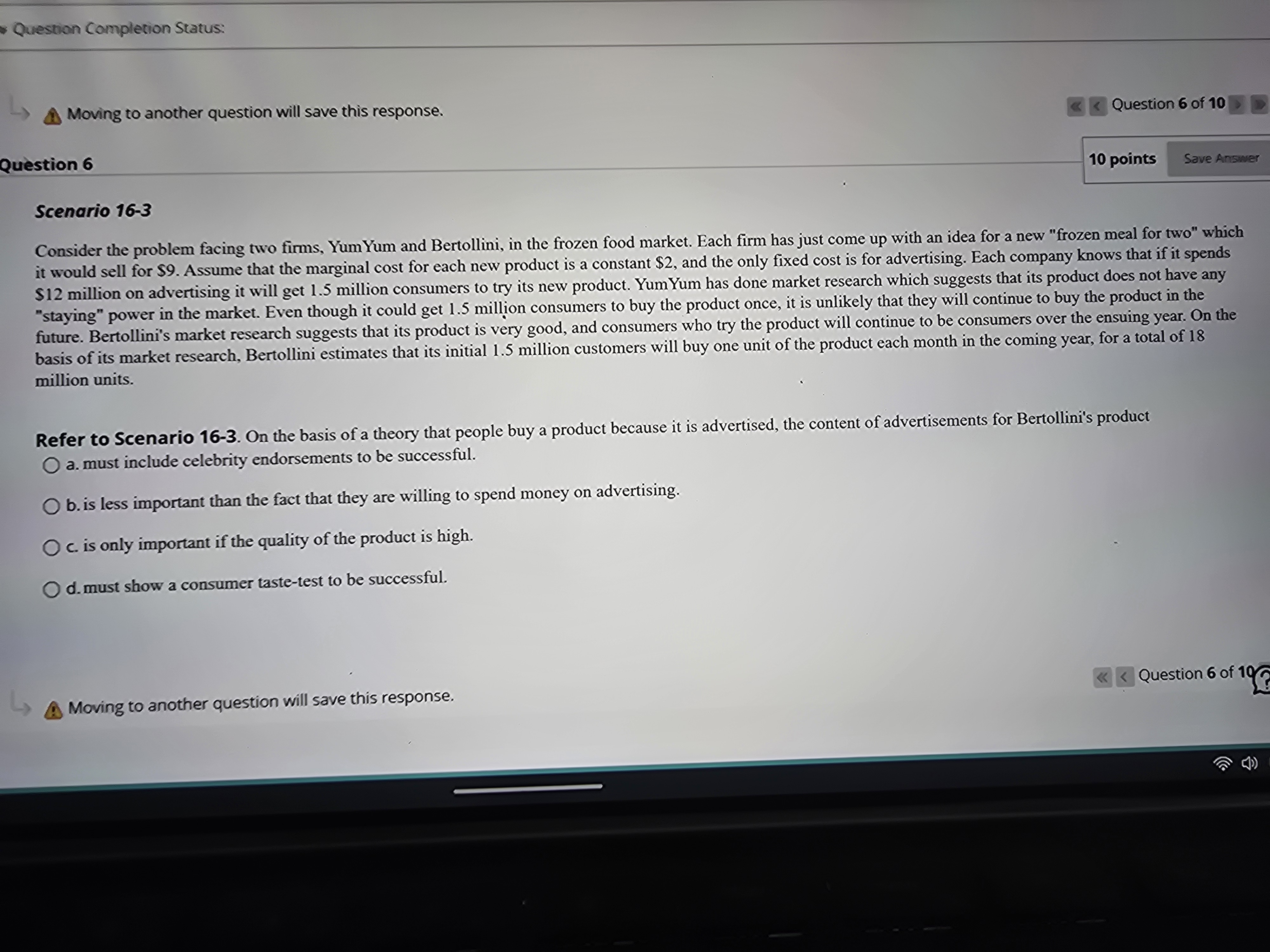(Solved): Question 6 Scenario 16-3 Consider the problem facing two firms, YumYum and Bertollini, in the fr ...
Question 6 Scenario 16-3 Consider the problem facing two firms, YumYum and Bertollini, in the frozen food market. Each firm has just come up with an idea for a new "frozen meal for two" which it would sell for \( \$ 9 \). Assume that the marginal cost for each new product is a constant \( \$ 2 \), and the only fixed cost is for advertising. Each company knows that if it spends \( \$ 12 \) million on advertising it will get 1.5 million consumers to try its new product. YumYum has done market research which suggests that its product does not have any "staying" power in the market. Even though it could get 1.5 million consumers to buy the product once, it is unlikely that they will continue to buy the product in the future. Bertollini's market research suggests that its product is very good, and consumers who try the product will continue to be consumers over the ensuing year. On the basis of its market research, Bertollini estimates that its initial 1.5 million customers will buy one unit of the product each month in the coming year, for a total of 18 million units. Refer to Scenario 16-3. On the basis of a theory that people buy a product because it is advertised, the content of advertisements for Bertollini's product a. must include celebrity endorsements to be successful. b. is less important than the fact that they are willing to spend money on advertising. c. is only important if the quality of the product is high. d. must show a consumer taste-test to be successful.
